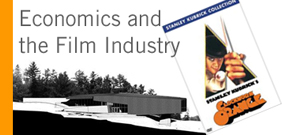
Introduction and Methodology
This paper continues along a similar tangent to my thesis research into the economic aspects of architecture. To complement this research, this report explores how the film industry has historically financed feature length productions and attempts to draw similarities between film and building industries. Additionally, this paper investigates how the building industry can potentially adopt some strategies commonly used in the film industry to encourage a more creative means of procuring buildings.
Most of the movies viewed in the class were feature length films, distributed by major North American studios. Although this category of film is typically the most expensive, it is also the category with the most information available. For these reasons, this report focuses primarily on major “Hollywood Style” feature films.
Information for this report was largely found on-line. Almost all current feature length films publish a gross budget in round millions but provide little information beyond this. Because of the secrecy around film budgets and variables in determining production budgets especially with some of the older films, figures quoted in this report should be considered approximations only, used primarily for comparison purposes. Film revenues also suffer from the spectacle of big numbers and are equally difficult to determine with any accuracy beyond round millions. Studios will either under-report or over-report figures depending on perceived marketing advantages. Comparing film revenues over a longer period of time is not generally feasible as potential revenues vary drastically depending on what country the film is released, studio fees, … all independent of inflation pressures or other economic measures. Chapter 2 explores in some detail many of the factors that determine total project “negative costs” (production budgets) and revenues for films.
As film budgets tend to be at a scale unperceivable to most people who don’t deal with large sums of money on a regular basis the following figure 1.1 compares film budgets to tangible buildings of a similar budget. This will help people to quantify the budget associated with the primarily intangible costs associated with films.
The data-heavy nature of this report favors representation in the form of spreadsheets and graphs to convey information in the place of text. The medium of a website encourages a more random process of reading the entire document depending on a readers interests. For this reason each section is considered a self-contained report on the topic.
Section 1, Production Costs and Revenue, provides an overview of factors contributing to cost and revenue of feature length films. The case-study examples are taken from films viewed in the class with both negative costs and revenue information available.
1The Movie Industry
Section 2, Comparison to the Building Industry, examines how the mechanisms inherent in the film industry can be adopted by the building industry to encourage more creative solutions to making traditionally underfinanced construction projects more feasible.
Economics and the Film Industry • Final Assignment - Arch 646 • Tavis McAuley